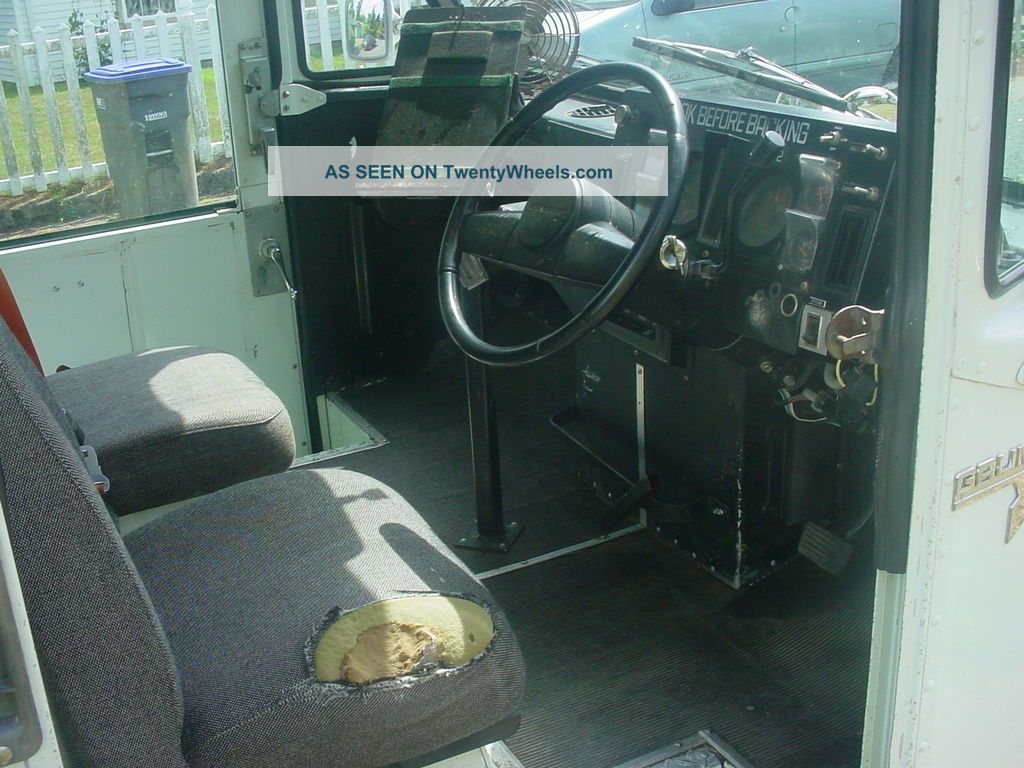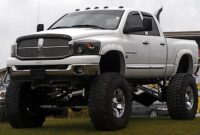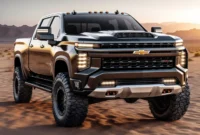Grumman LLV Mail Truck For Sale: Your Comprehensive Guide to Owning an American Icon cars.truckstrend.com
The familiar sight of the Grumman Long Life Vehicle (LLV) has been a constant on American streets for over three decades, diligently delivering mail through rain, sleet, and snow. More than just a utility vehicle, the LLV has become an enduring symbol of the United States Postal Service (USPS) and a piece of Americana. However, as the USPS transitions to a new generation of delivery vehicles, thousands of these iconic right-hand drive workhorses are being retired and, fascinatingly, are now available for public purchase.
For enthusiasts, entrepreneurs, or anyone seeking a truly unique vehicle, the opportunity to own a Grumman LLV is a compelling prospect. This comprehensive guide will delve into everything you need to know about purchasing, inspecting, repurposing, and maintaining one of these resilient machines, turning what was once a mail carrier’s office on wheels into your next great project or business venture.
Grumman LLV Mail Truck For Sale: Your Comprehensive Guide to Owning an American Icon
I. The Legacy of the LLV: A Brief History and Design Overview
The Grumman LLV, an acronym for "Long Life Vehicle," was specifically designed for the USPS in the late 1980s to replace aging fleets like the Jeep DJ-5. The contract was awarded to Grumman Corporation, a company more commonly associated with aerospace manufacturing. The first LLVs rolled out in 1987, and by the early 1990s, over 140,000 had been delivered, becoming the backbone of the USPS delivery fleet.
Key Design Features:
- Right-Hand Drive (RHD): This was a critical feature, allowing mail carriers to efficiently access mailboxes on the right side of the road without needing to exit the vehicle or stretch across the cabin.
- Aluminum Body: To combat rust and reduce weight, the LLV features an aluminum body mounted on a robust steel chassis. This design contributes significantly to its "long life."
- Chevrolet S-10 Chassis: Underneath the unique body, the LLV shares many mechanical components with the Chevrolet S-10 pickup truck and Blazer SUV from the same era. This includes the 2.5L "Iron Duke" four-cylinder engine or, in later models, the 2.2L four-cylinder engine, and automatic transmissions (often the GM 3-speed THM 180C or 4-speed 4L60-E). This commonality is a huge advantage for parts availability.
- Simple, Functional Interior: Designed for utility, the interior is spartan, featuring a single driver’s seat, a large cargo area, and basic controls. Air conditioning was not standard in most models.
- Durability: The "Long Life" in its name was literal; the USPS specified a 24-year service life. Many LLVs far exceeded this, serving for 30 years or more, a testament to their rugged construction.

The LLV’s simple, robust design and its singular purpose made it incredibly effective at its job. Now, as they enter their second life, these same attributes make them appealing to a new generation of owners.
II. Why Buy an LLV? Unpacking the Unique Advantages
The decision to purchase a decommissioned mail truck might seem unconventional, but the LLV offers a surprising array of benefits that make it an attractive option for various buyers:
- Unmatched Durability and Reliability: These vehicles were built for continuous, heavy-duty use. While they come with high mileage, their fundamental components are engineered to withstand significant wear and tear.
- Practical Right-Hand Drive (RHD): Beyond the novelty, RHD is genuinely useful for certain applications. Think curbside deliveries, driving school instruction, or even just turning heads at a car show.
- Ample and Accessible Cargo Space: The LLV’s primary function was carrying mail, and it excels at cargo. Its large, open rear compartment is perfect for tools, packages, mobile retail, or even a compact camper conversion.
- Affordability: Compared to conventional vehicles, LLVs can often be acquired at very competitive prices through government auctions, making them an excellent value proposition for their utility.
- Simplicity of Mechanics and Parts Availability: Thanks to its Chevy S-10 underpinnings, finding replacement parts for the engine, transmission, and suspension is relatively easy and affordable. The simple design also makes them more approachable for DIY mechanics.
- Iconic Status and Novelty: Owning an LLV is an instant conversation starter. It’s a piece of American history that brings a smile to people’s faces and stands out in any crowd. For businesses, it offers unparalleled brand visibility.

III. Finding Your LLV: Where and How to Purchase
The primary source for acquiring a Grumman LLV is through government surplus auctions.
1. Government Auctions:
The USPS disposes of its retired vehicles through various government auction platforms.
- GovPlanet: This is arguably the largest and most consistent source for LLVs. GovPlanet specializes in selling surplus government and military equipment, and a significant portion of USPS vehicle sales goes through them.
- How to Purchase: Register on the website, browse upcoming auctions, and bid on vehicles. Each listing typically includes detailed photos, a basic inspection report, and the vehicle’s location. Be prepared to arrange pickup from the depot.
- GSA Auctions (General Services Administration): Another federal platform that may list LLVs, though less frequently than GovPlanet for these specific vehicles.
- Local Government Auctions: Occasionally, state or municipal entities that acquired LLVs for their own use might auction them off. Check local government websites or auction houses.
Tips for Auction Bidding:
- Register Early: Complete the registration process well in advance of the auction you plan to bid on.
- Research Thoroughly: Read descriptions carefully, view all photos, and pay attention to details like "non-runner" or "salvage title."
- Factor in Additional Costs: Remember to account for buyer’s premiums, sales tax (if applicable), and transportation costs from the auction site to your location.
- Set a Budget: It’s easy to get caught up in the bidding process. Determine your maximum bid beforehand and stick to it.
- Patience is Key: If you don’t win your first bid, more LLVs will always become available.
2. Private Sellers and Dealers:
Less common, but some individuals or smaller used vehicle dealers might acquire LLVs from auctions and resell them, often after performing some basic maintenance or cosmetic work.
- Where to Look: Online marketplaces like eBay, Facebook Marketplace, Craigslist, or specialized commercial vehicle classifieds.
- Caveats: While potentially more convenient than an auction pickup, prices may be higher, and it’s crucial to verify the seller’s reputation and the vehicle’s history.
IV. What to Look For: A Buyer’s Inspection Checklist
Purchasing a vehicle that has served a demanding career delivering mail requires a thorough inspection. Most LLVs will have high mileage and visible wear, but the key is to differentiate between cosmetic issues and mechanical problems.
- Mileage and Hours: Expect high numbers (150,000 to 250,000+ miles are common). Don’t let mileage alone deter you; focus on overall condition. Many also have an hour meter, which gives a better indication of idle time.
- Rust: The aluminum body panels are largely rust-proof, but the steel chassis, frame, and suspension components are highly susceptible to rust, especially in regions with road salt. Inspect the frame rails, suspension mounts, brake lines, and exhaust system thoroughly.
- Engine Condition:
- Listen for unusual noises (knocks, clunks, persistent ticking).
- Check for fluid leaks (oil, coolant, transmission fluid).
- Look at the exhaust smoke color (blue for oil, white for coolant, black for rich fuel).
- If possible, check oil and coolant levels and condition.
- Transmission:
- Check fluid level and color (should be reddish, not dark brown or burnt).
- Listen for grinding or slipping during shifts (if test drive possible).
- Ensure it engages gears smoothly.
- Brakes: Check the pedal feel, listen for grinding or squealing. Inspect pads and rotors if visible.
- Steering and Suspension: Check for excessive play in the steering wheel. Look for worn bushings, leaky shocks, or broken springs.
- Tires: Uneven wear can indicate alignment or suspension issues. Check tread depth and overall condition.
- Electrical System: Test all lights (headlights, taillights, turn signals, brake lights), wipers, and horn. Verify the battery’s condition.
- Body Damage: Dents and dings are almost guaranteed. Look for structural damage, signs of major accidents, or poor repairs. Check the integrity of the rear cargo door.
- Interior: While basic, ensure the driver’s seat is functional, and the dashboard is not excessively damaged. Confirm basic controls work.
- No AC: Be aware that most LLVs were not equipped with air conditioning, which can be a significant consideration in warmer climates. Some later models or specific batches might have it, so check the listing.
Practical Advice: If buying from an auction without a physical inspection, rely heavily on the provided photos and descriptions. Some auction sites offer third-party inspection services for a fee, which can be a worthwhile investment.
V. Beyond Mail Delivery: Repurposing Your LLV
The LLV’s unique design and robust construction make it surprisingly versatile for a wide range of civilian uses:
- Mobile Business / Food Truck: The spacious, accessible cargo area is ideal for a small mobile coffee stand, a snack bar, a pop-up boutique, or even a grooming service. Its distinctive look draws attention.
- Local Delivery Service: For florists, bakeries, laundry services, or general courier work, the LLV offers efficient curbside access and ample storage.
- Promotional Vehicle / Advertising: Wrap it with your company’s logo and contact information, and you have a highly visible, mobile billboard that turns heads wherever it goes.
- RV / Camper Conversion: For minimalist adventurers, an LLV can be converted into a compact, stealthy camper. The tall interior allows for standing, and the large rear door makes loading easy.
- Right-Hand Drive Enthusiast / Driving School: For those who appreciate unique vehicles or for driving schools specializing in RHD training, it’s a perfect fit.
- Tool/Work Vehicle: Plumbers, electricians, and handymen can outfit the cargo area with shelves and bins for organized tool storage.
- Novelty/Parade Vehicle: Simply owning and driving an LLV is a fun experience, perfect for parades, car shows, or just cruising around.
VI. The Practicalities of Ownership: Registration, Insurance, and Maintenance
Owning an LLV involves specific considerations that differ from a standard passenger car.
- Titling and Registration: This can be the most challenging aspect. Rules vary by state, and some DMV offices may be unfamiliar with registering an RHD former government vehicle.
- Salvage Many LLVs sold from auctions will come with a salvage title. This indicates it was deemed a total loss by the USPS for various reasons (not necessarily severe damage). You’ll need to understand your state’s requirements for obtaining a "rebuilt" or "roadworthy" title.
- Proof of Ownership: Ensure you receive all necessary paperwork from the auction house or seller.
- Emissions and Inspections: Be prepared for state-mandated safety and emissions inspections.
- Insurance: Some standard auto insurance companies might hesitate to insure an RHD commercial-style vehicle. You may need to seek out specialized insurance providers that cater to unique vehicles, commercial vehicles, or classic cars (if you plan to restore it).
- Common Maintenance: Thanks to the Chevy S-10 platform, routine maintenance is straightforward:
- Engine: Oil changes, spark plugs, air filters are readily available.
- Transmission: Fluid and filter changes.
- Brakes: Pads, rotors, drums, and brake lines are common parts.
- Tires: Standard sizes.
- Suspension: Shocks, springs, bushings are generally easy to source.
- Parts Availability: Excellent for mechanical components due to the S-10 commonality. Body panels and specific LLV-unique interior parts might be harder to find, though some aftermarket or salvaged parts exist.
- Potential Challenges:
- Speed Limitations: The LLV is not built for highway speeds. Its top speed is generally around 65-70 mph, and it feels strained at higher speeds. It’s best suited for urban and suburban driving.
- Lack of Modern Safety Features: No airbags, ABS, traction control, or advanced driver-assist systems.
- No Air Conditioning: Most models lack AC, which can be a significant comfort issue in hot climates. Aftermarket AC units can be installed, but it’s an added cost.
- Noise: The cabin can be noisy due to minimal insulation.
Grumman LLV Mail Truck For Sale: Estimated Price Guide
The price of a Grumman LLV can vary significantly based on its condition, mileage, and the auction environment. The following table provides a general estimate:
| Condition Category | Estimated Price Range (USD) | Key Characteristics & Considerations |
|---|---|---|
| "Parts Vehicle" / Non-Runner | $500 – $1,500 | Not running, significant mechanical issues, rust, or body damage. Likely salvage title. Best for parts or a full ground-up restoration project. |
| Fair / Runner with Issues | $1,500 – $3,500 | Runs and drives but has known mechanical problems (e.g., transmission slip, engine noise, major leaks) or significant cosmetic flaws. Requires immediate repairs. |
| Good / Operational | $3,500 – $7,000 | Runs and drives reliably, passes basic safety checks, minor cosmetic wear, possibly high mileage but well-maintained. Ready for immediate use with minimal work. |
| Excellent / Well-Maintained | $7,000 – $12,000+ | Rare. Low relative mileage for an LLV, minimal rust, well-maintained engine and transmission, potentially some desirable features (e.g., working AC, newer tires). Suitable for direct commercial use or as a showpiece. |
| With Aftermarket AC | Add $1,000 – $2,500 | If an LLV has a professionally installed and working aftermarket air conditioning system, it significantly adds to its value and comfort. |
Note: These prices are estimates and can fluctuate based on auction demand, geographical location, and specific vehicle features. Always factor in auction fees, taxes, and transportation costs.
Frequently Asked Questions (FAQ) about Grumman LLV Mail Trucks
Q1: Are Grumman LLVs street legal for private ownership?
A1: Yes, generally. However, specific state regulations regarding titling, registration, and emissions for former government or RHD vehicles can vary. It’s crucial to check with your local DMV. Many LLVs are sold with salvage titles, requiring inspection to get a "rebuilt" title.
Q2: Do all LLVs have air conditioning?
A2: No, the vast majority of LLVs were manufactured without air conditioning to save costs and reduce fuel consumption. Some later models or specific batches might have had it, and some private owners have installed aftermarket AC units.
Q3: How fast can a Grumman LLV go?
A3: The LLV’s top speed is typically around 65-70 mph, though it feels most comfortable at speeds below 55 mph. It’s not designed for sustained highway travel and lacks the power of modern vehicles.
Q4: Can I convert an LLV to left-hand drive (LHD)?
A4: While technically possible, it would be an extremely complex, costly, and time-consuming undertaking. It involves moving the steering column, dashboard, pedals, and potentially modifying the firewall. For most, it’s not a practical conversion.
Q5: Are parts difficult to find for an LLV?
A5: For mechanical components (engine, transmission, suspension, brakes), parts are generally easy to find because many are shared with the Chevrolet S-10 pickup truck and Blazer SUV from the late 80s/early 90s. Specific LLV body panels or interior pieces might be harder to source but are available from salvage yards or specialized aftermarket suppliers.
Q6: What kind of fuel economy can I expect?
A6: The LLV is not known for its fuel efficiency. Depending on driving conditions and engine size, you can expect anywhere from 10-17 miles per gallon. Heavy loads and frequent stop-and-go driving will push it towards the lower end.
Q7: Why are LLVs being sold now?
A7: The USPS is retiring its aging LLV fleet as part of a modernization effort. They are being replaced by new, more fuel-efficient, and technologically advanced vehicles, including the Next Generation Delivery Vehicle (NGDV) from Oshkosh Defense.
Conclusion: The Enduring Charm of the Grumman LLV
The Grumman LLV mail truck, with its distinctive shape and right-hand drive configuration, is more than just a decommissioned postal vehicle; it’s a testament to American utility and an icon of daily life. For those willing to embrace its quirks and appreciate its robust simplicity, owning an LLV offers a unique opportunity.
Whether you envision it as a quirky daily driver, a standout promotional vehicle for your business, a compact mobile home, or simply a fascinating piece of automotive history, the LLV provides a canvas for creativity. While it demands a realistic understanding of its limitations and the unique aspects of its ownership, the rewards of repurposing this steadfast workhorse into something entirely new are immeasurable. As these familiar vehicles gradually disappear from our streets, acquiring one now is not just buying a truck; it’s preserving a piece of the past and giving it a vibrant, new future.




